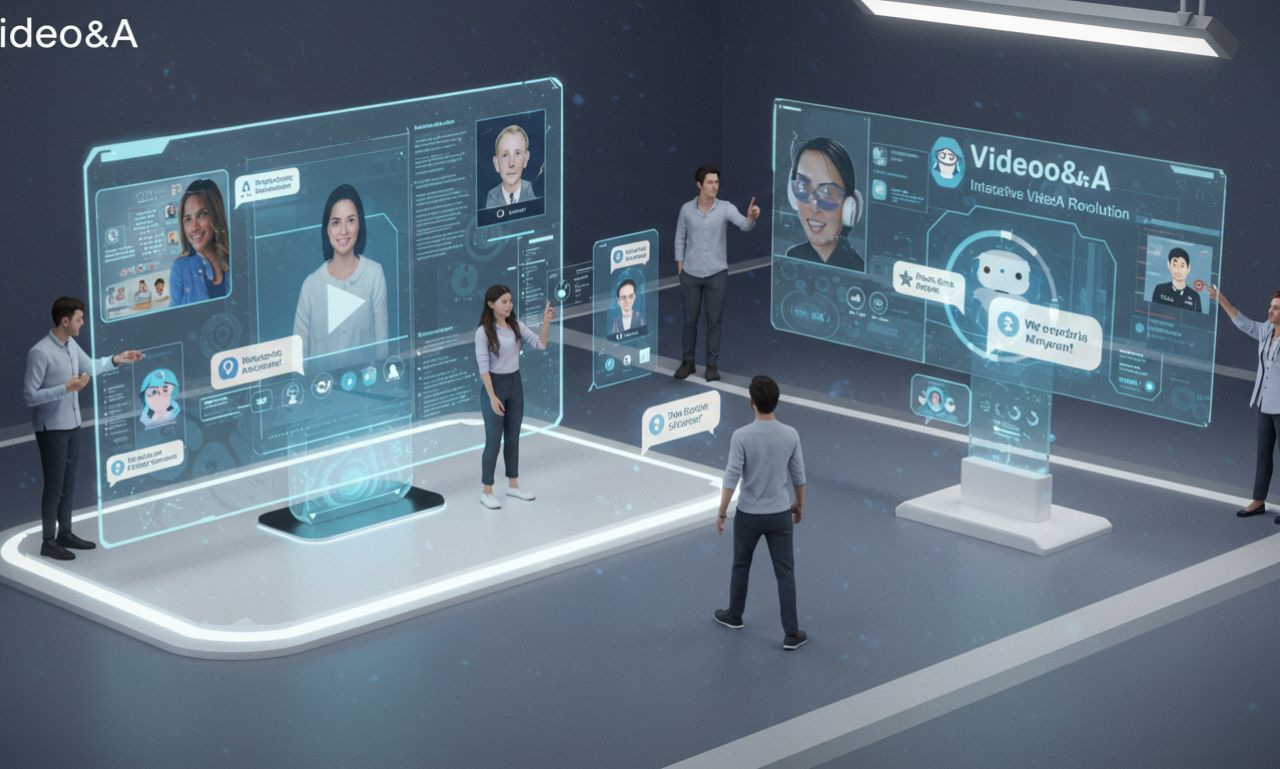Video&A—short for Video & Answers—is a digital communication format where questions are submitted and answered via short, focused videos rather than text. Answers might be pre-recorded or live, bringing authenticity, visual clarity, and personal connection to the interaction.
This approach represents a shift from lengthy text to mobile-friendly, engaging video responses—especially useful for demonstrations, tutorials, and audience engagement.
Applications of Video&A Across Industries
Education & E-Learning
Educators use Video&A to respond to student queries with visual explanations—ideal for complex subjects like math or science.
Customer Support
Companies employ video responses instead of generic FAQs, enhancing personalization and clarity.
Social Media & Influencer Engagement
Creators answer fan questions via video, cultivating stronger community ties and authenticity.
Corporate Training & Events
Video&A enables repeatable, visual training and allows remote attendees to ask questions with video-based replies—perfect for virtual settings.
Health & Wellness Advice
While not a substitute for clinical consultation, professionals can deliver general guidance clearly and empathetically via video.
Why Video&A Resonates with Modern Audiences
-
Human Connection: Viewers see tone, expression, and emotion, forging a stronger bond with the speaker.
-
Visual Clarity: Complex actions are easier to follow with video—ideal for tutorials and demonstrations.
-
Fits Short Attention Spans: Quick, focused answers cater to mobile-first, time-conscious users.
-
Enhanced Trust: Real people addressing questions on camera feel more reliable than faceless text.
Technology Empowering Video&A
-
Streaming Platforms: YouTube, Instagram Live, TikTok, and Zoom support video Q&A functionality.
-
AI Tools: Automated captioning, content moderation, and question sorting elevate production quality.
-
Mobile Convenience: Users can easily record and view Video&A on the go.
-
Analytics & Insights: Track engagement, question trends, and viewership for optimization.
Creating an Effective Video&A Session
-
Promote Ahead: Let your audience know when and how they can participate.
-
Gather Questions Early: Ensure prepared, coherent responses with some spontaneity allowed.
-
Be Clear and Concise: Focused answers maintain attention and comprehension.
-
Demonstrate Visually: Use props, screenshares, or physical examples.
-
Prioritize Quality: Mind lighting and audio for professional polish.
-
Include Captions: Improve accessibility and reach.
Challenges to Address
Technical Glitches: Poor audio or lighting can detract from credibility.
Moderation Needs: Live some sessions, managing incoming questions can be overwhelming.
Accessibility Barriers: Must include subtitles, translations, and accommodations for all audiences.
Over-Saturation: Amidst abundant video content, clear narratives and branding are essential to stand out.
The Future of Video&A
-
AI Moderation: Automated sorting and prioritizing of viewer questions.
-
Interactive Formats: Choose-your-own-path Q&A experiences using branching video logic.
-
VR & AR Integration: Immersive Video&A could place you in virtual environments with interactive Q&A scenes.
-
Micro-Clips for Channels: Short-answer videos optimized for platforms like TikTok and Shorts.
Conclusion
Video&A is redefining how we share knowledge and connect online. By turning questions into personal, visual conversations, it bridges the gap between static text and interactive engagement. Benefiting education, business, social media, and more, Video&A is poised to become a mainstream communication format—one that values clarity, authenticity, and human connection.
